This article is co-published with All Things D, where Peninsula Press reporter Eric Johnson is an intern.

Big video games like Mass Effect 3 and Halo 4 aren’t going away anytime soon. But a growing cadre of independent games developers is taking the road less traveled — keeping teams tiny and visions narrow.
In fact, they say they don’t want to grow. And despite that unorthodox philosophy, they’re reaching big audiences, making some impressive money and shaking up the games industry as a whole.
These independent developers, or “indie devs,” fill a huge spectrum of opinions about what video games can and should be. But, as with their counterparts in music and movies, it’s not always easy to nail down which games are indie and which aren’t.
Up-and-coming publishers like Zynga and Rovio started out small and indie, of course. In the loosest sense, the term applies to pretty much anyone who’s not one of the big legacy game companies, such as Nintendo, Sega or Electronic Arts.
However, after they put out a hit or two, a few independents peel off from the pack by continually hiring and growing. Contrast Zynga, which has nearly 3,000 employees at 21 offices around the world, with unconventional companies such as San Francisco-based Bolt Creative, where the two co-founders pointedly avoided hiring anyone but themselves.
“We made a decision to stay small,” said Dave Castlenuovo, Bolt’s only programmer. “To me, I get the most enjoyment working out of my home, getting to see my wife.”

Castlenuovo and his design partner Allan Dye eschewed the new-normal start-up song-and-dance: Securing VC funding, finding office space and building a company on the idea of scaling bigger and bigger.
Instead, they found huge success, despite staying small, with their flagship game Pocket God. The game lets sadistic smartphone owners punish an island of perennially doomed cartoon pygmies.
Pocket God was a one-off project started in late 2008, which went from idea to a first version on the iPhone App Store in about a week, Castlenuovo said.
But it has outperformed most one-week larks. The 99-cent app and its downloadable extras have earned about $7.5 million so far.
And the game’s pygmy characters have racked up an additional $600,000 through a spinoff comic book series, which is not bad for a two-man team.
So, how does a little operation such as Bolt Creative thrive while a company like Nintendo, with access to some of the world’s top talent and most beloved video game characters, is reporting to investors its first annual loss since 1981?
Part of it, of course, is the conventional wisdom that smaller start-ups are just nimbler on their feet. But to get at the real answer, you have to look primarily at three big companies: Valve, Apple and Facebook.

On PCs, Valve’s Steam Store eliminated the need for developers to get their games distributed in brick-and-mortar stores in order to find a mass paying audience of gamers. Mobile app marketplaces, starting with Apple’s on iOS, similarly leveled the playing ground for smartphone game developers.
And games have also infiltrated social networking sites, especially Facebook, although the spoils are decidedly lopsided: Zynga alone was responsible for 15 percent of the company’s revenue in the first quarter of 2012.
To raise the money to make new games, new avenues are also springing up fast. In March, San Francisco-based Double Fine Productions solicited donations on Kickstarter for a new point-and-click adventure game in the style of the classic games made by its founder, Tim Schafer. They met their $400,000 goal in about eight hours and ultimately raised $3.3 million from Kickstarter users.
These sorts of developers don’t always have it easy: They have to do more with less, taking on more responsibilities than they might have to in much larger teams. And they can’t bank on legacy pieces of intellectual property for success.
Not that this is an equally bad fate for everyone. For his part, Castlenuovo compares himself to Robert Rodriguez, an independent filmmaker who famously produces, writes, directs, shoots and edits most of his movies solo.
“I enjoy wearing many hats,” Castlenuovo said.
Plus, indie devs can now focus more on making the games they’re most passionate about and less on how they’re going to sell them, at least initially.
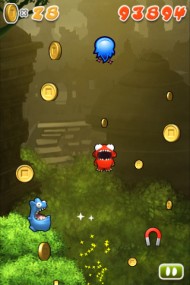
Derek van Vliet, co-founder of a Toronto-based indie shop called Get Set Games, seems to be in a good place. His company’s casual iPhone/Android game Mega Jump, initially developed by just three people (now upped to four), has racked up 24 million downloads since May of 2010.
But van Vliet grumbled that bigger companies like Electronic Arts can temporarily take over app store charts by throwing around the weight of some of their biggest properties, including Madden, Tetris and Scrabble.
“That’s getting a lot from very little work for them,” he said.
For better or for worse, the business of games is not a meritocracy. But it might be a mistake to assume it’s all one big, cohesive business in the first place. After all, the devs say, isn’t at least some of what we’re doing art?
Art vs. entertainment?
If you want to quickly start a fight on the Internet, you should follow Roger Ebert’s lead and assert in broad strokes that video games are not and will never be art. Even among the game developer community, the dividing line between art and entertainment is fuzzy at best and may be impossible to place outright.
After all, some games are just casual fun. But others are deeply personal for their creators and, if you believe their many fans, are more meaningful and higher-quality as a result.
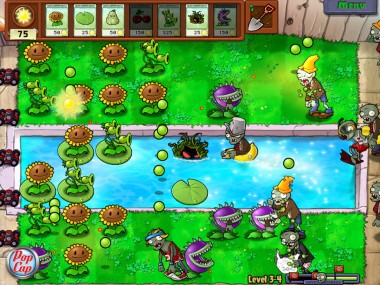
George Fan, co-creator of Plants vs. Zombies, said he knows his game is a piece of entertainment, which he developed independently and later distributed through PopCap before EA bought the company in 2011. But he questioned whether art and indie projects even have a chance amid the business pressures at EA.
“It’s pretty much as far as you could get from indie in any company,” Fan said.
Castlenuovo echoed the sentiment, noting big companies are best able to serve their investors when they focus on making top-10 hits.
“I’m going to stick with the creativity,” he said.
 Even if you accept that some developers are making artful games, getting others to appreciate them in that way is an uphill battle. In the delightful new documentary “Indie Game: The Movie,” developer Jonathan Blow explains how his indie mega-hit Braid explores the concept of trying to reverse past mistakes by giving players the ability to rewind time.
Even if you accept that some developers are making artful games, getting others to appreciate them in that way is an uphill battle. In the delightful new documentary “Indie Game: The Movie,” developer Jonathan Blow explains how his indie mega-hit Braid explores the concept of trying to reverse past mistakes by giving players the ability to rewind time.
However, the directors then cut to an online video reaction to the game from Soulja Boy. The young rapper enthusiastically tells his fans that Braid “ain’t got no point … you just walking around, jumpin’ on shit.”
Still, when developers can work by themselves or on very small teams, rather than as part of a publicly traded company, they’re freer to pursue “passion projects” that mean more to them. On the surface, that’s good, but it can also be a sort of psychological poison.
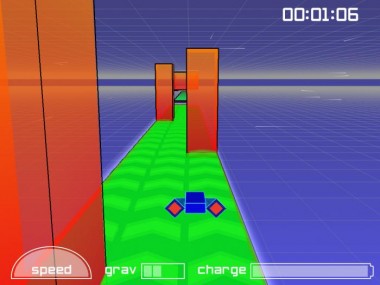
For Leo Alterman, a hobbyist indie dev and senior at Stanford University, making games is about recreating a sense of wonder he felt as a child playing Nintendo 64. And he’s not just talk: A game he built from scratch starting in high school, Tasty Static, has racked up 100,000 free downloads online in the past two years.
But Alterman said he could never make games his profession — the personal stakes are just too high.
“If you’re doing that as a job, and you fuck it up, then yeah, you’re kind of in trouble,” he said.
Indie devs straddle the stressful line between living to work and working to live. Despite his quest for childlike wonder, Alterman describes himself as morbid, and he’s in good company: In “Indie Game: The Movie,” one developer compares his work to being in a concentration camp as a major deadline approaches. Another earnestly threatens to kill himself if he can’t finish his game as planned.
“So, that’s my incentive,” he deadpans.
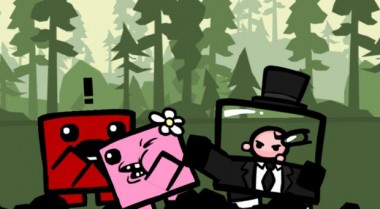
It seems unlikely that gamers would look at the latest update to Madden or Words With Friends and use it to judge those games’ creators. But Edmund McMillen, co-creator of the popular (and maddeningly difficult) indie platformer game Super Meat Boy, said the game and its public image are so tied to his story and personality that it’s impossible not to feel judged.
“We put everything into it,” McMillen said of himself and his “Team Meat” partner Tommy Refenes. “We are the game.”
The mainstream response
Just as with indie music and movies, there’s a more emotional response to the idea of a game produced by one or two people than one produced by a faceless company. And finding indie game developers who are willing to question the values of big games companies — like EA and Zynga — is like finding sand on a beach.
“That doesn’t seem like art to me,” the hobbyist dev Alterman said of Zynga, which did not respond to requests for comment. “They’re playing a different game.”
“Zynga’s a business,” Team Meat’s McMillen said. “I would go so far as to say they don’t even make games. They make money.”
“That sounds like hell to me,” Refenes says in “Indie Game: the Movie,” after he’s asked about working at EA or Epic Games.
Plus, players are responding to independent developers in a big way. According to the mobile app analytics and advertising firm Flurry, 56 percent of all mobile games played in Q1 2011 were made by indie devs; one year later, in Q1 2012, that share had jumped to 68 percent.

But those opinions and trends don’t seem to deter Rich Hilleman, EA’s chief creative officer and one of the company’s first 20 employees from the early 80s. He’s careful to praise talented indie devs who have gone on to join EA, but also stresses the administrative headaches that come with staying small.
“I want to not have to worry about clearing credit cards and legal issues and translating this stuff into Maltese,” he said. “I think you recognize that it was fun to be independent, except that that stuff wasn’t all that fun.”
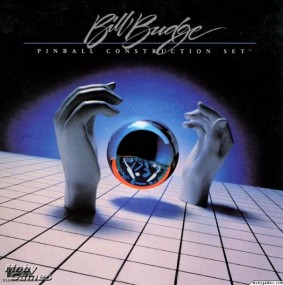
When Hilleman joined EA, the company didn’t do any development in-house; it was solely a publisher that connected independent game designers with bigger audiences. Within the gaming world, the company helped make rock stars out of developers like Bill Budge, whose game, Pinball Construction Set, was packaged like a music album, with Budge’s name in giant script on the front.
Not really something you’d see today. I’ve sunk countless hours into EA’s Need for Speed racing game on my iPhone, but I couldn’t tell you the name of a single person who helped make it.
When I told him this, Hilleman countered that customers, not publishers, are the ones who decide who the stars are, although it’s hard not to wonder why that star status doesn’t correlate with hugely popular games like EA’s Star Wars: The Old Republic, which gained 1 million subscribers within three days of its launch last year.

Hilleman readily volunteers that one of the closest modern rock-star successors to Bill Budge is an indie dev: Notch, the creator of Minecraft. In the past three years, Notch’s sandbox game has built an extremely passionate community of over 16 million players, despite having primarily three programmers listed in its credits.
Despite all this, Hilleman draws a firm line in the sand in opposition to independent developers who say they’re freer to pursue “passion projects” than developers at EA.
“Building video games is just hard,” Hilleman said. “There is no such thing as building something you do not like. It just does not happen.”
Of course that doesn’t mean life is necessarily easier for devs who, at big companies, don’t have to translate anything into Maltese. James Swirsky, co-director of “Indie Game: The Movie,” said he saw plenty of hardship in his two years as a games tester at EA.
Devs there, he said, “were just as stressed out and pushed to the brink as the guys you see in the film.”
The key difference
Independent game developers share a lot of DNA with their big-business brethren, and the differences aren’t big enough to merit a culture war or to force audiences to choose between one or the other.
Furthermore, the mainstream world is not clueless: EA has learned its lessons from the years in the mid-aughts when console games seemed stuck in a rut, and has tried to reach out to and learn from the independent community — although Hilleman is quick to point out the irony of the situation, since in the 80s “Electronic Arts” was still small enough to be synonymous with the indie scene.
Meanwhile, Zynga has established a successful pattern of growing by acquisition, looking for the independent shops that are happy to sell out (not that that’s a bad thing, as OMGPOP and others can tell you).
But there’s still a key difference between the independents and the rest, and everyone watching the gaming space should note: With the rise of indie games as an economic force to be reckoned with, the charges are set for an explosion of creativity in the gaming world in the coming years. Indie devs have been around for decades, but now it’s easier than ever for them to make a comfortable living while making the games they personally pick and love.
The “hardcore” gamer community often derides social games on Facebook and mobile devices as too simplistic. But that will change. Games will get better and more ambitious as barriers to entry continue to fall and more outlier voices come into the mix.
With indies coming into the spotlight, games may finally be able to come into their own. Call it a real-world power-up.
